Many thanks to SWLing Post contributor, Don Moore–noted author, traveler, and DXer–for the following Photo Album guest post series:
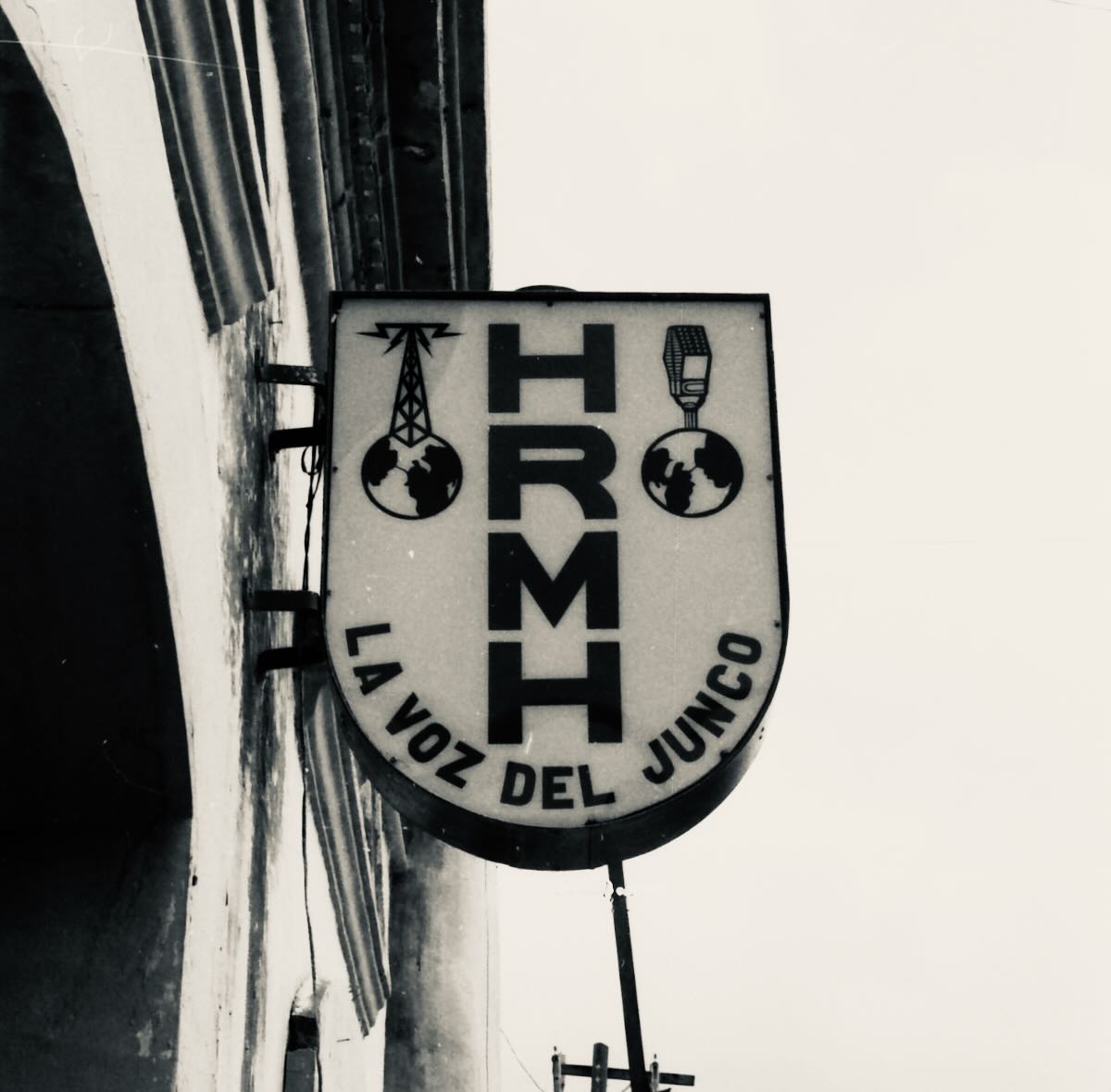 Don Moore’s Photo Album: Santa Bárbara, Honduras
Don Moore’s Photo Album: Santa Bárbara, Honduras
by Don Moore
I first set foot in Latin America in January 1982 when I arrived in Tegucigalpa to begin three months of Peace Corps training. Three months later I moved to my Honduran home, the town of Santa Bárbara in the western mountains. For the next two years I worked as a teacher and resource person at the Escuela Normal Mixta de Santa Bárbara, a specialized high school that trained its students to teach primary school.
Santa Bárbara had a shortwave station, La Voz del Junco on 6075 kHz but it was rarely reported because it broadcast irregularly and was usually blocked by big international broadcasters when it was on the air. I had never heard it but I met Miguel Hasbun, the owner-manager, on my first visit to Santa Bárbara when he picked me up hitchhiking north of town. He told me that the shortwave transmitter had been broken down for a while but that he was going to fix it ‘soon’. Over the next year I kept inquiring about the shortwave and he finally did fix it. After that the station broadcast irregularly for the next year or so, mostly in the morning. I served as volunteer veri-signer and issued around fifteen QSLs. I even issued one to myself.
Santa Bárbara had one other radio station, Ondas del Ulúa on 1140 kHz medium wave (later 1150 kHz). They also announced 4770 kHz shortwave in their canned IDs and station staff assured me they would be adding shortwave “soon”. It never did happen but the WRTH did list the frequency as future plans for several years.
Audio:
Ondas del Ulúa 1982 sign-off announcement mentioning 4770 kHz.
The department of Santa Bárbara had one other radio station, Radio Luz y Vida on 1600 and 3250 kHz in the town of San Luis. The founder, manager, and veri-signer for Radio Luz y Vida was a missionary from Oklahoma named Don Moore. Needless to say, this caused a lot of confusion in the DX world as some people assumed he and I were the same person. On the map, San Luis is only about thirty kilometers from Santa Bárbara but getting there involved a five-hour journey on two buses. I only went once and the other Don Moore was out of town, so I never met him. I did meet two nurses who were working at the mission’s health clinic.
Photos
These pictures were all taken in 1982 to 1984 while I lived in Santa Bárbara [click on photos to enlarge].
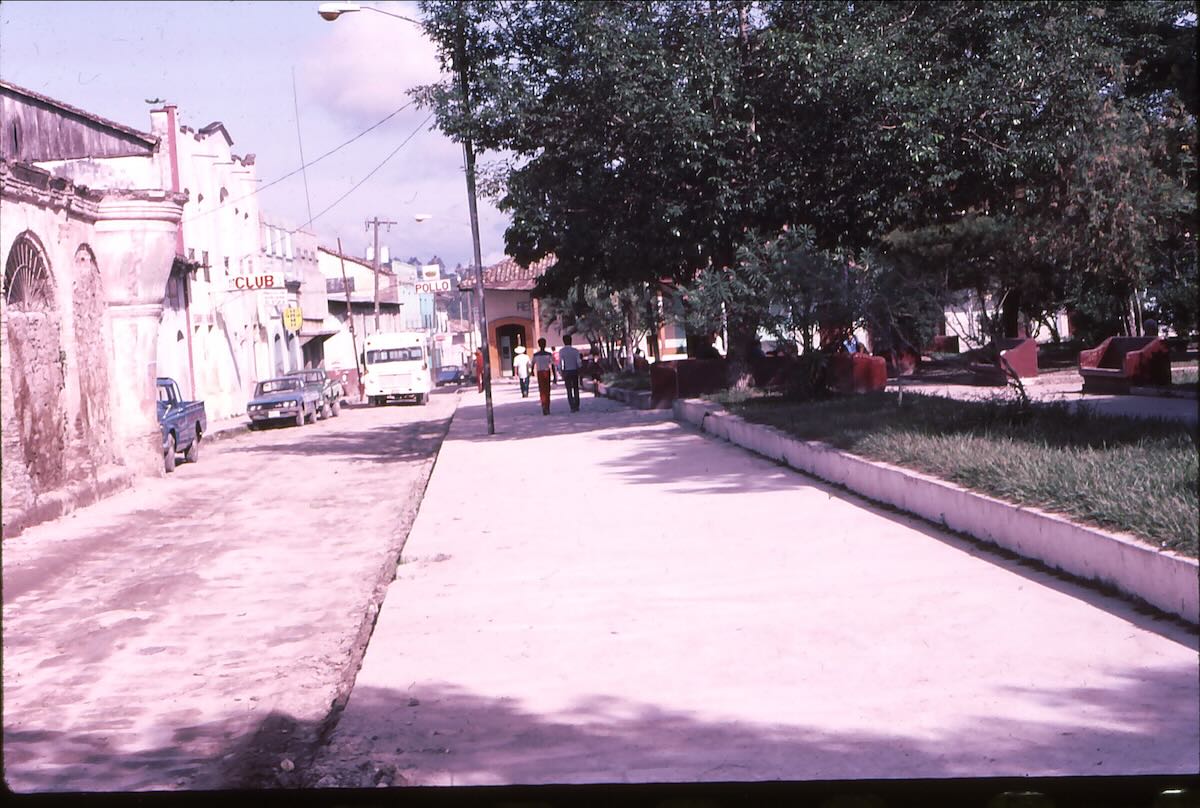
La Voz del Junco’s yellow sign on main street in downtown Santa Bárbara. The small tower on the left was the corner of what had been an army post but was being used as a regional prison in the early 1980s. I once went there every day for a week to supervise student-teachers doing adult literacy classes for the inmates. It was not a pleasant place to be.
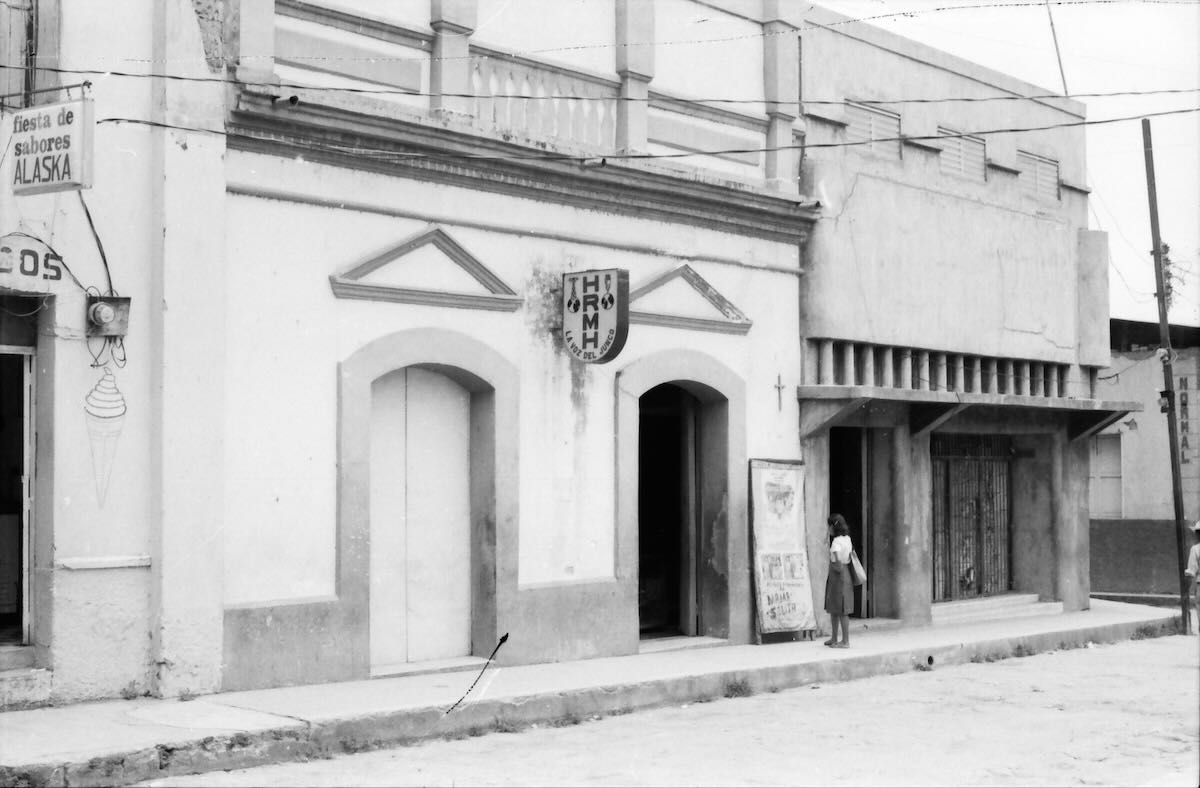
Entrance to La Voz del Junco. The girl is examining a poster for the night’s showing at the makeshift movie theater that Don Miguel operated nearby.
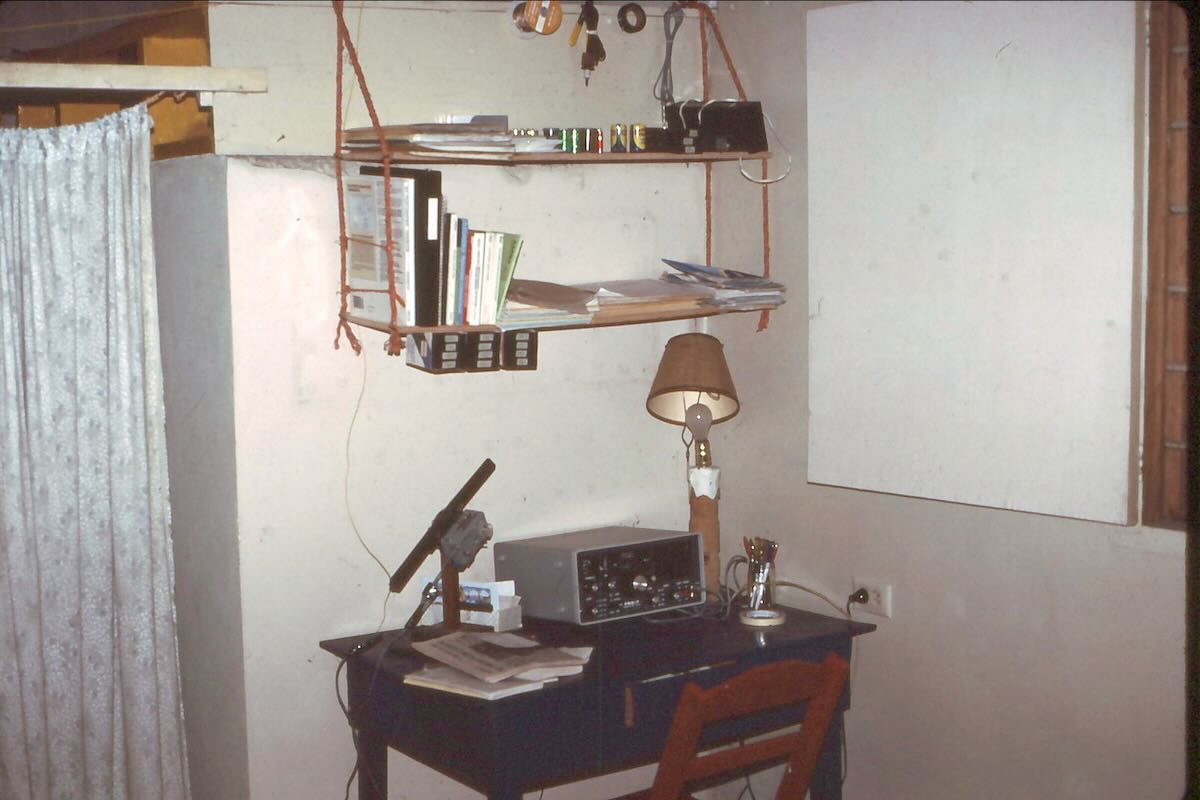
DX shack at my first Santa Bárbara home. I had a Yaesu FRG-7 with a 2.9 kHz Collins mechanical filter and Radio West ferrite antenna for medium wave DXing. For shortwave I used various random wire antennas.
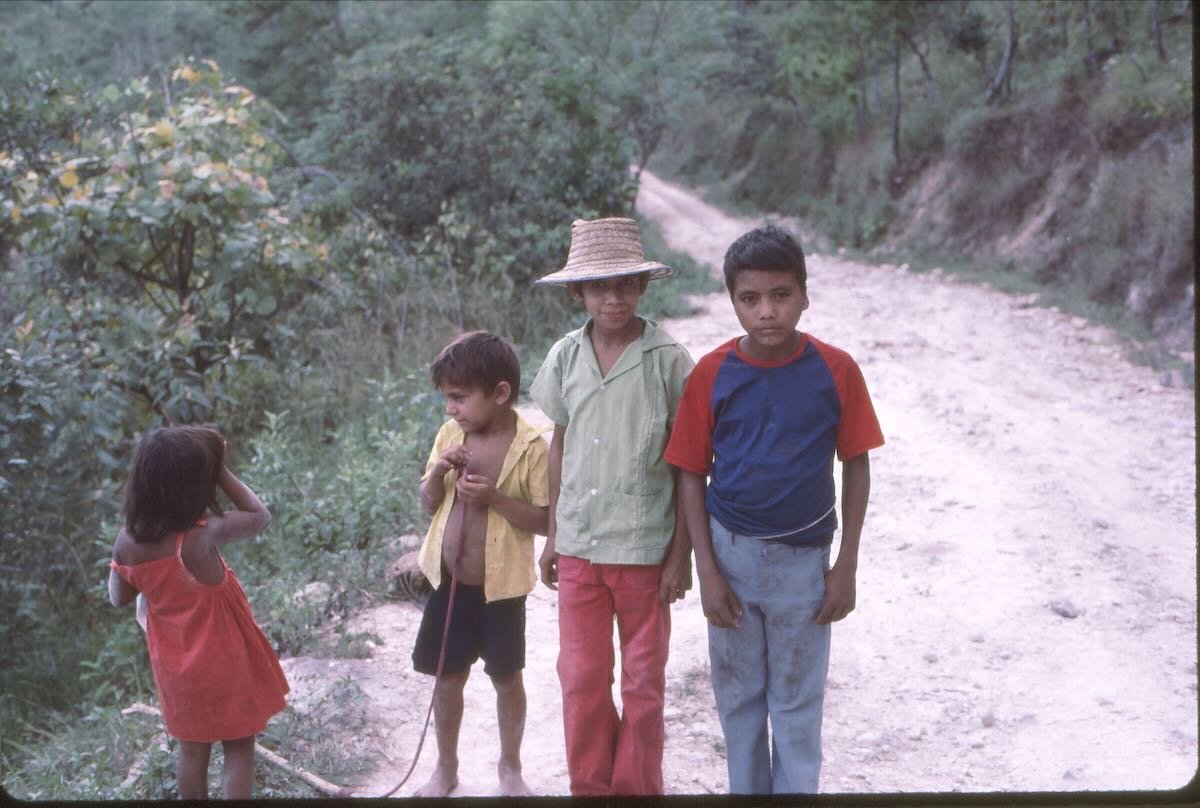
Peasant children on the mountain above town.
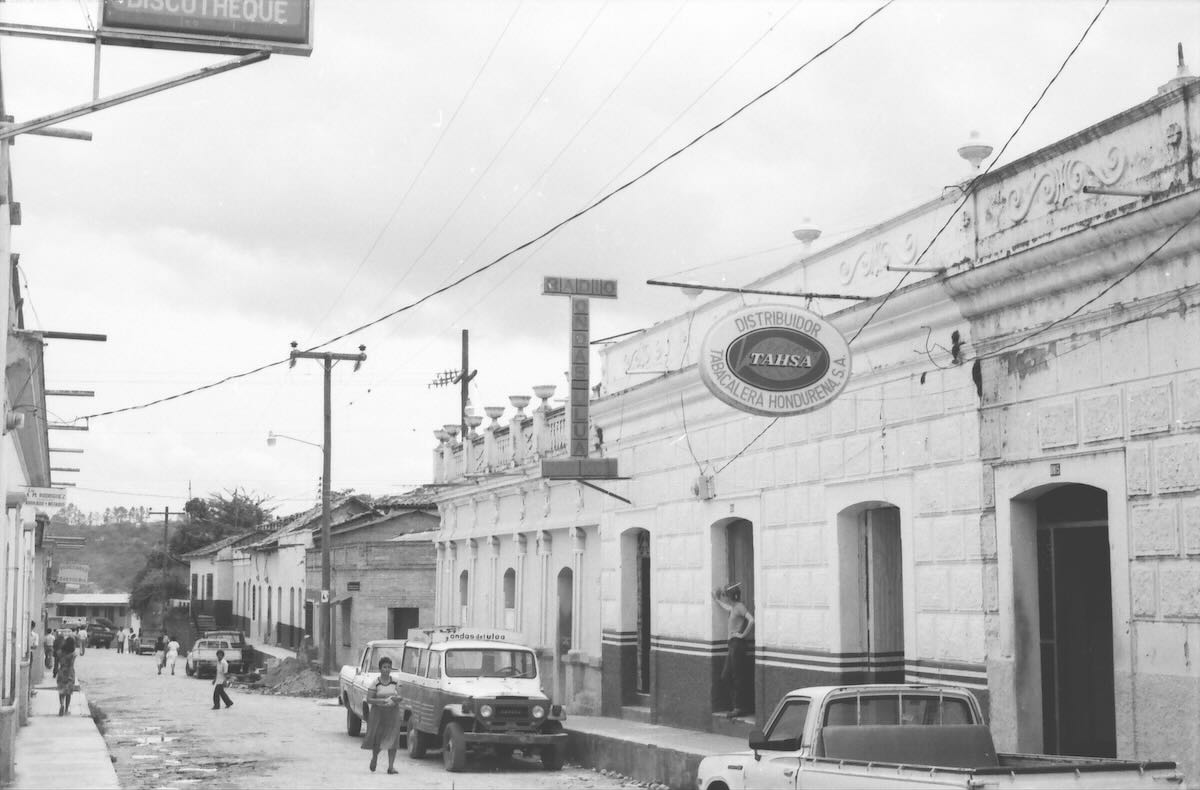
Ondas del Ulúa was on this unpaved street just half a block from the main plaza.
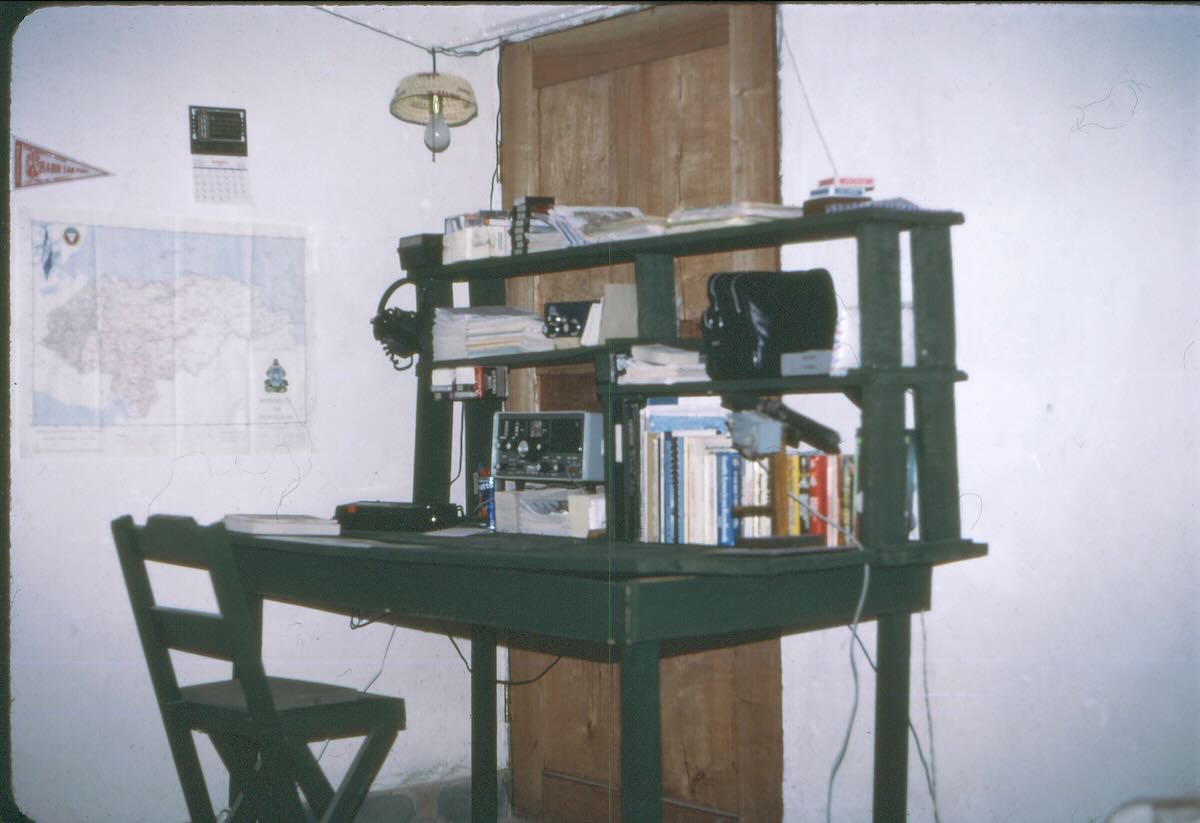
After a few months I moved to the outskirts of town so I could have better DXing. The chair was purchased but I made the table myself using just a handsaw and a hammer. The front board lifted up to uncover a storage space underneath.
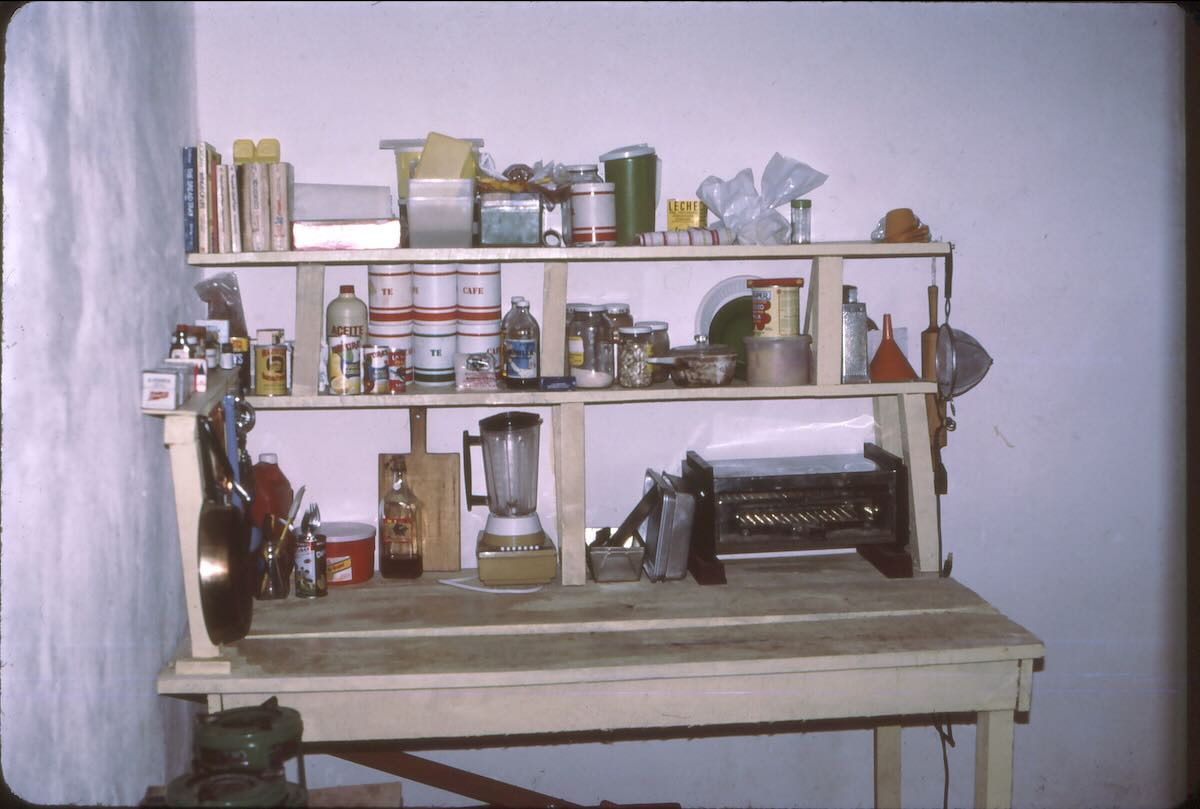
I also built my own makeshift kitchen. The toaster oven was nice but I did most of my cooking on the two kerosene burners in front.
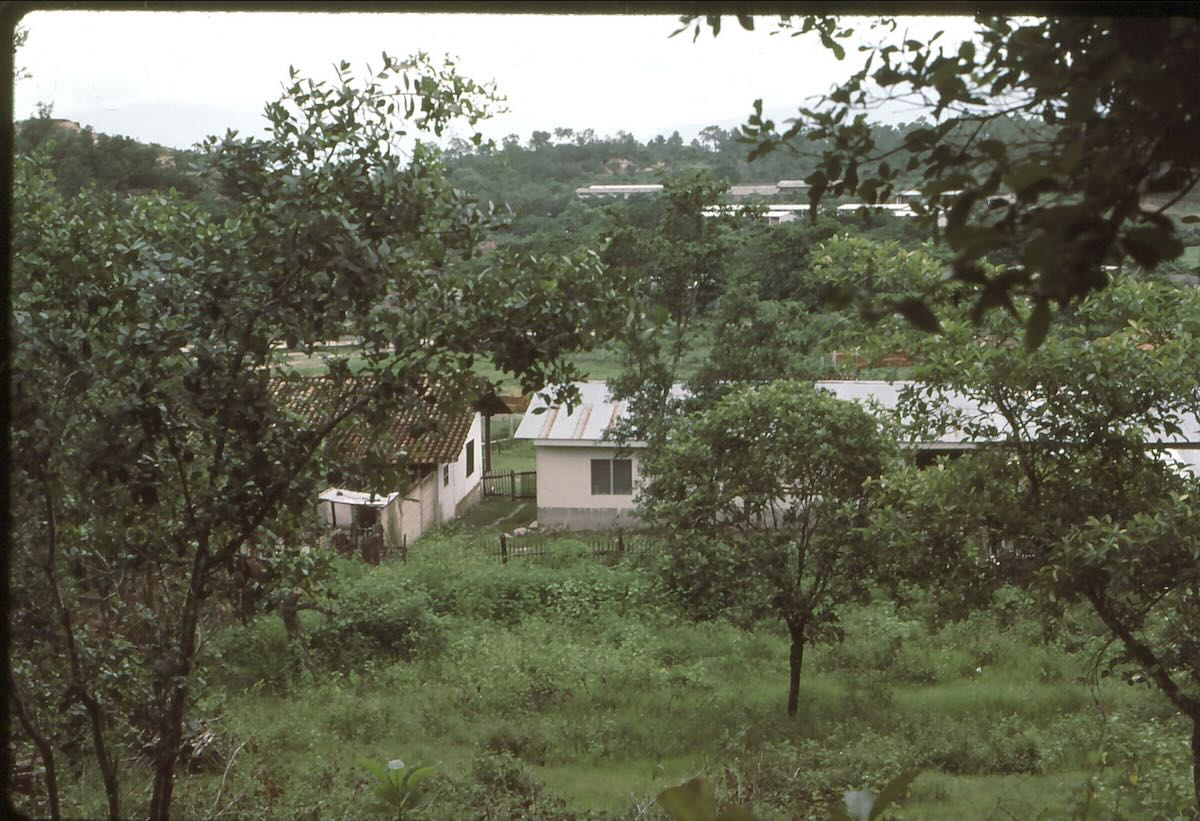
For my last year in Santa Bárbara I lived in a small apartment behind the window on the left side of the long building. My landlord lived in the adobe house next door. The school I worked at can be seen in the far background.
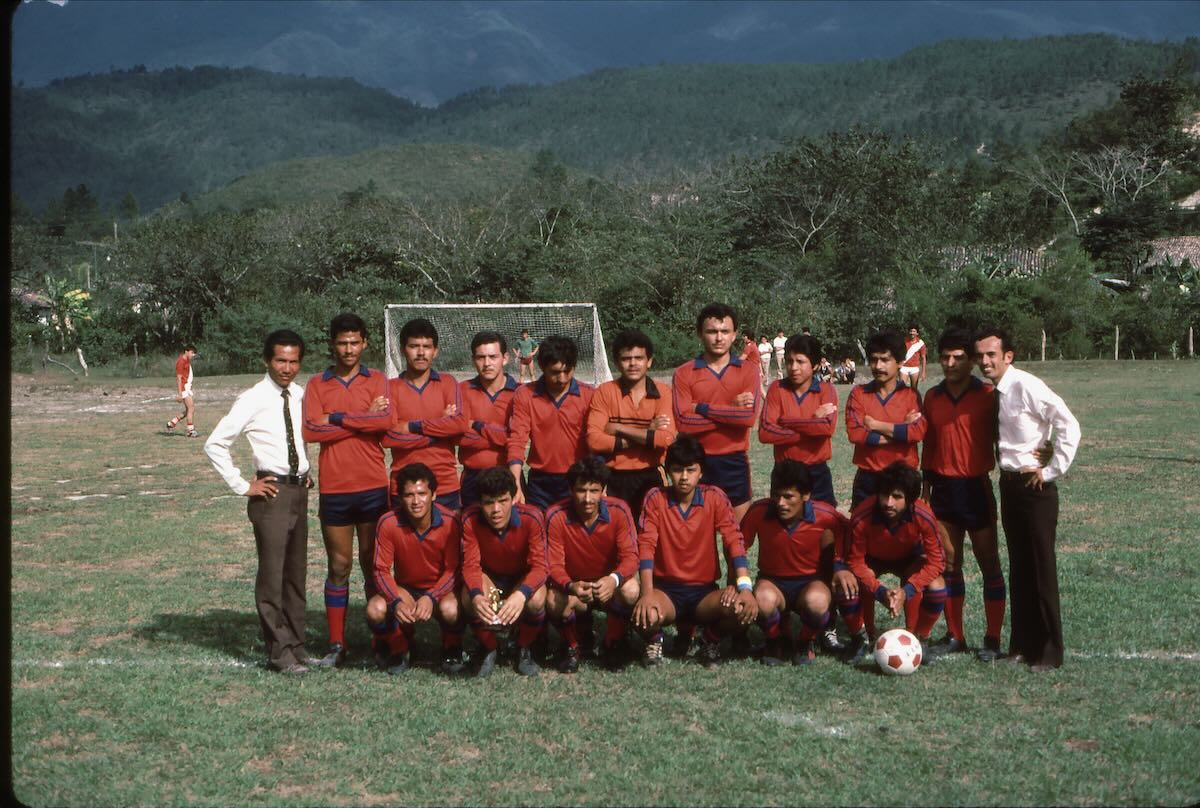
The fútbol team for the Escuela Normal Mixta in 1984.
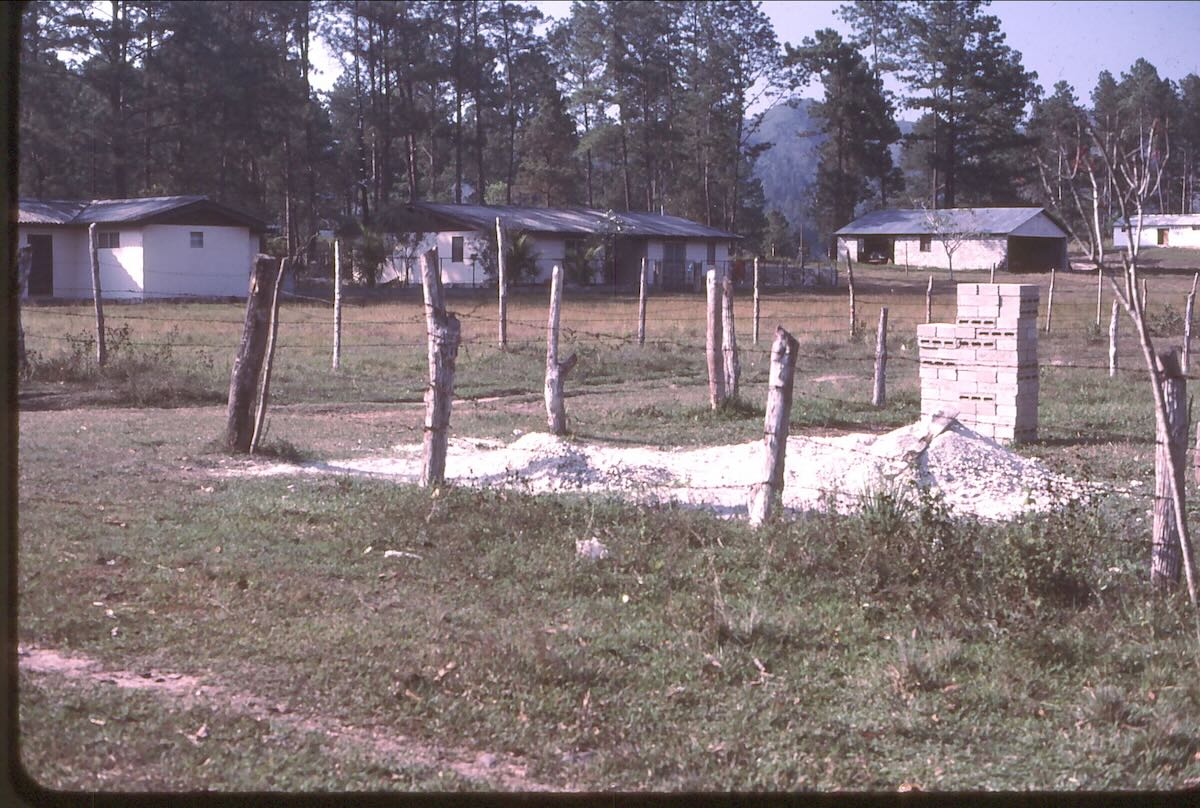
The compound at Radio Luz y Vida. The health clinic is on the left. The clinic nurses and the Don Moore family lived in the double house in the center. A storage building and the radio station are to the right.
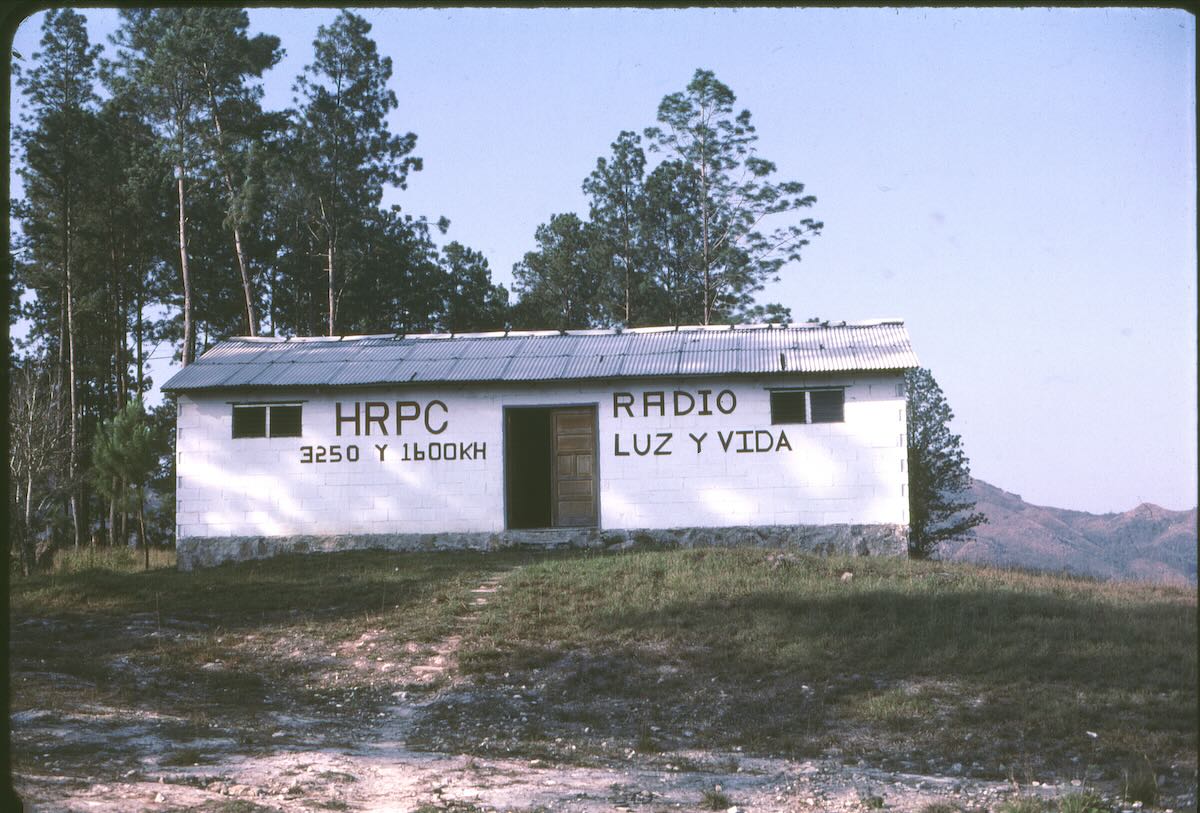
The Radio Luz y Vida building.
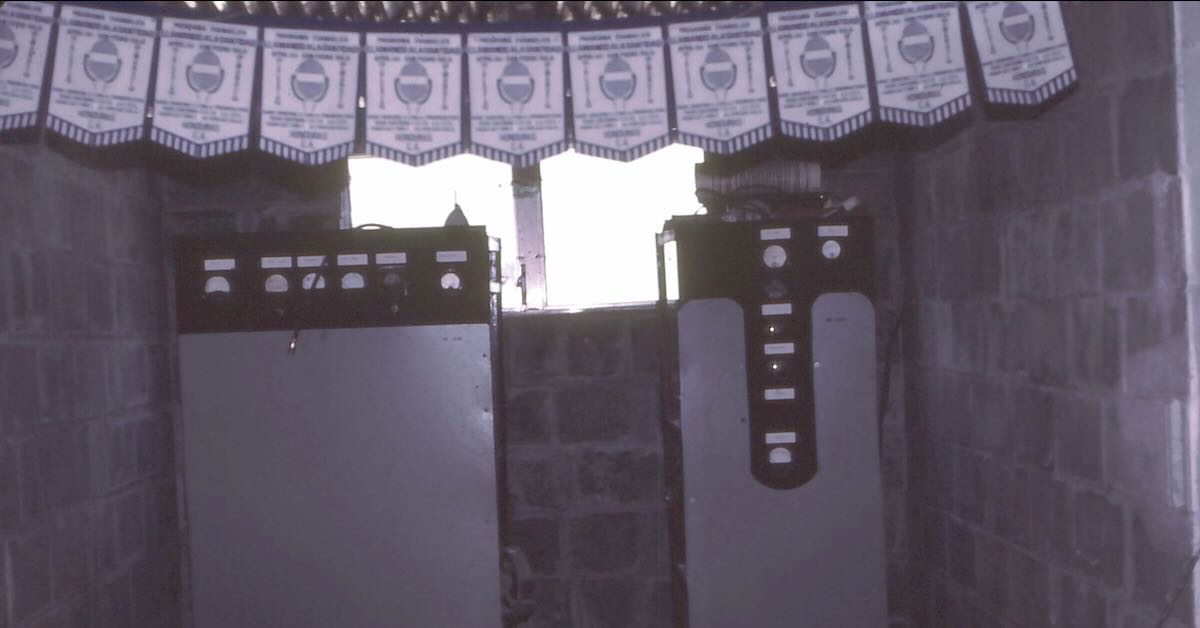
The shortwave and medium transmitters of Radio Luz y Vida and a string of station pennants. (Unfortunately, I was not given one.)
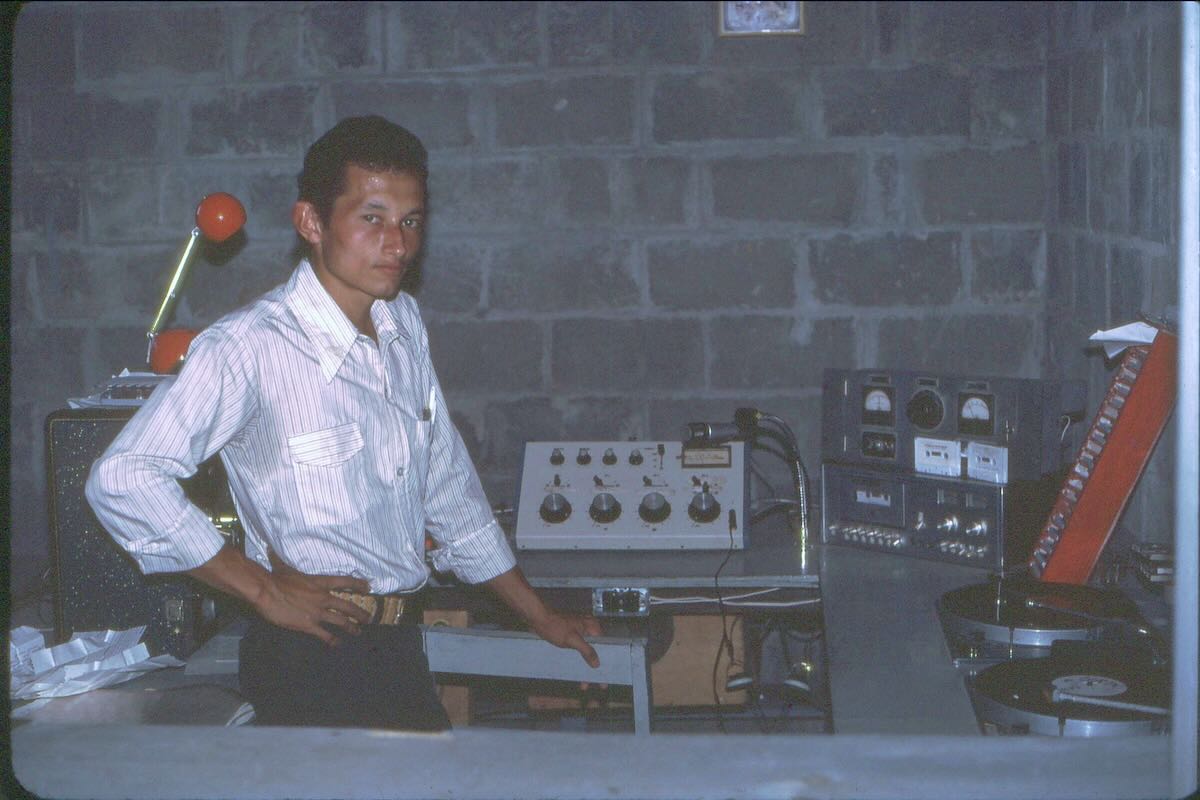
The studio at Radio Luz y Vida.
I haven’t been back to Santa Bárbara since 1984 but I’m working on arranging a group trip in the next year or two with some other Peace Corps volunteers who served in the area. Of course, a lot has changed in four decades. The school I worked at no longer exists as an institution. About fifteen years ago Honduras transitioned to requiring primary teachers have a college degree and the facilities became a junior college.
In the mid-1990s Miguel Hasbun was electrocuted while working on what would have been Santa Bárbara’s first television station. The shortwave had been off the air for several years at that point but the family began putting it back on irregularly for about a year after that. At that time 6075 kHz was open in the morning so more North American DXers were able to log them. Miguel’s son and widow continue to operate the station, which I believe is only on FM now. Unfortunately they don’t have a web-stream but I am Facebook friends with the station. Ondas del Ulúa does have a web-stream which I occasionally listen to. They still sometimes play the same canned ID mentioning 4770 kHz shortwave. For many years Radio Luz y Vida was the most consistently heard shortwave station from Honduras. My final logging of them was in November 2009 but they may have been around a few years after that. They continue to broadcast on FM and via web-stream.
A few links
- La Voz del Junco Facebook page
- Ondas del Ulúa webstream
- Radio Luz y Vida Facebook page
- Radio Luz y Vida website and webstream
- Radio Luz y Vida building on satellite view
Click here to follow Don Moore’s monthly Photo Album series.

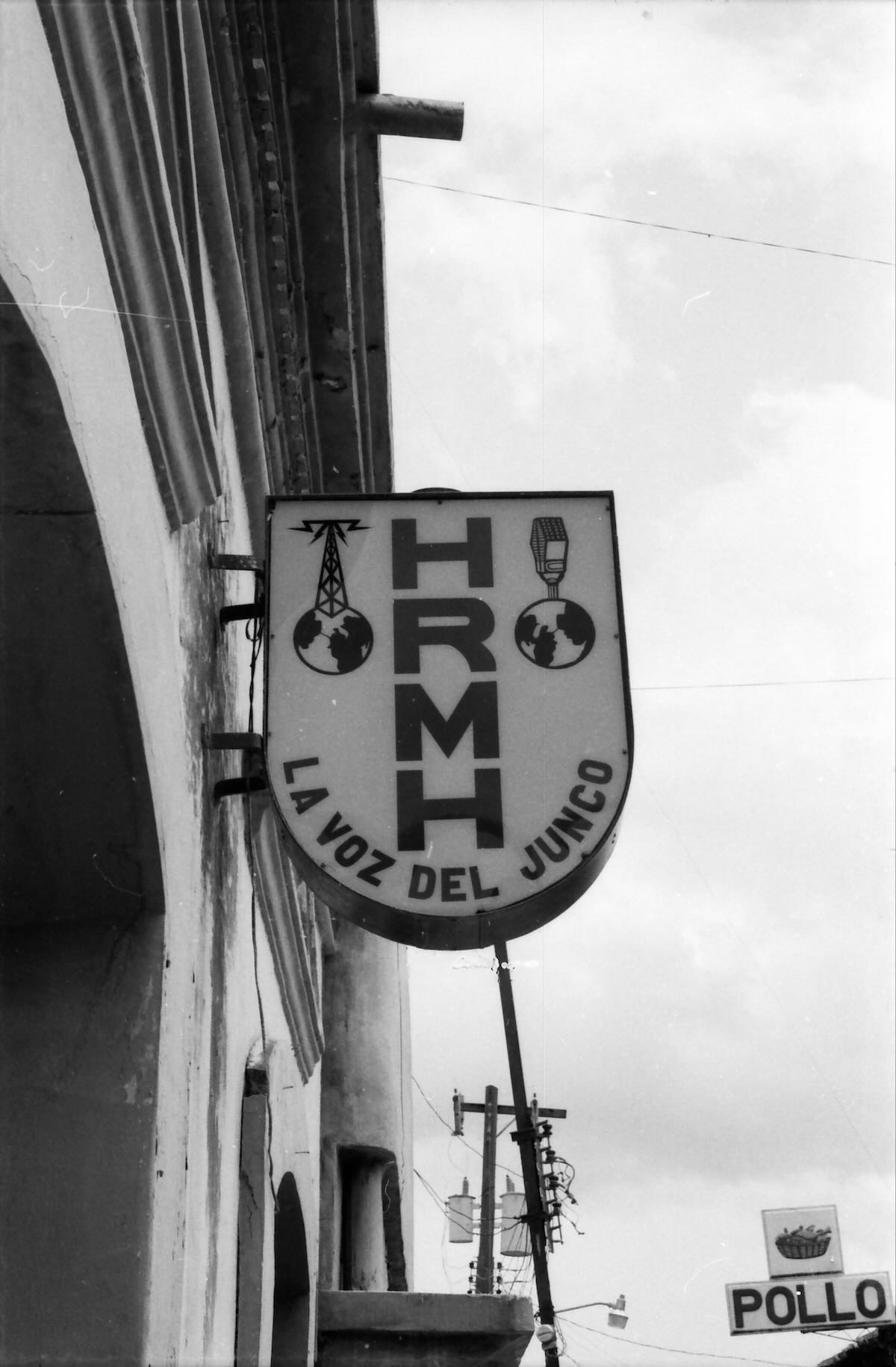
This is the stuff any shortwave magazine of value featured back in the day – giving the DX targets a face with photos of places, people and transmitters…DX for the eyes! I enjoyed them back then and I sure do today! I got my Frog-7 only a few years later but still, funny thought that I was hunting South American stations back then and someone over there used the same radio to do the same, on a DIY shack table like me. 🙂
What amazing experiences and lifelong memories you have. That is some wonderful information and thanks for sharing. I also hope you can get back down there.
Really interesting article with great photos. Wish we could bring back the kind of shortwave broadcast and other activity we had back in those days! I can imagine that Don pulled in some amazing stuff on that FRG-7. I just hope that no one tried pushing open that door while his listening station was situated where it was in the second SWL shack photo!
I had the radio west ferrite antenna hooked to a realistic dx-160
Fascinating report! My first “decent” shortwave receiver was the FRG-7.
W7YAZ
Thank you, Don, for yet another amazing photo tour!
I absolutely love your FRG-7 DXing station and imagine that, back then, RFI even in a more urban area would have been quite limited compared with now.
Thank you so much and we look forward to your December photo album next month!
Best,
Thomas